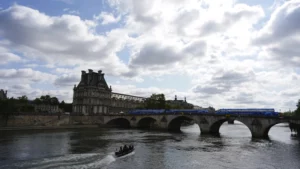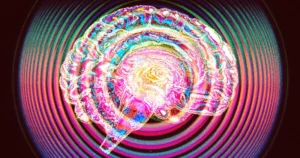In the realm of art and culture, connections can be drawn between nations that span continents and histories. A fascinating example of this is the current exhibition at Morocco’s Mohammed VI Museum of Modern and Contemporary Art, showcasing Cuban art in an African setting. This unique display is a result of a meeting of minds that took place when Moroccan King Mohamed VI visited Havana in 2017 and was captivated by the immersive experience provided by Cuban-American gallery owner Alberto Magnan.
Fast forward seven years, and the fruits of that cultural exchange are now on full display in Morocco. The exhibition, titled “Cuban Art: On the other side of the Atlantic,” features a collection of 44 pieces by the renowned Afro-Cuban painter Wifredo Lam. This showing of Lam’s work precedes a major retrospective planned at New York City’s Museum of Modern Art in 2025, making it a significant moment in the art world.
What makes this exhibition even more noteworthy is that it includes works by another influential Cuban artist, Jose Angel Toirac, being showcased outside of Cuba for the first time. The themes explored in the Cuban art on display range from issues of isolation and economic embargo to concepts of heritage and identity, reflecting the rich tapestry of Cuban culture and history.
The renewed interest in Cuban art by countries like Morocco can be attributed to the shifting geopolitical landscape following the restoration of diplomatic ties between the United States and Cuba in 2014, coupled with the passing of Fidel Castro in 2016. This resurgence of interest has led to increased funding for arts and culture in Morocco, as the country seeks to enhance its soft power in North Africa and beyond through cultural exchanges.
Both Cuba and Morocco have undergone significant political transitions in the 20th century – decolonization in Morocco and revolution in Cuba – which have influenced the artistic expressions of their respective populations. By delving into their histories and engaging with global art trends, artists from these nations have created works that resonate on a universal level, transcending borders and ideologies.
While the current exhibition does not directly address the diplomatic relations between Morocco and Cuba, it serves as a testament to the power of art in bridging divides and fostering understanding between nations with complex histories. Through the universal language of art, viewers are invited to explore the shared narratives and divergent paths that have shaped the cultural landscapes of Cuba and Morocco, offering a glimpse into the interconnectedness of our world.





